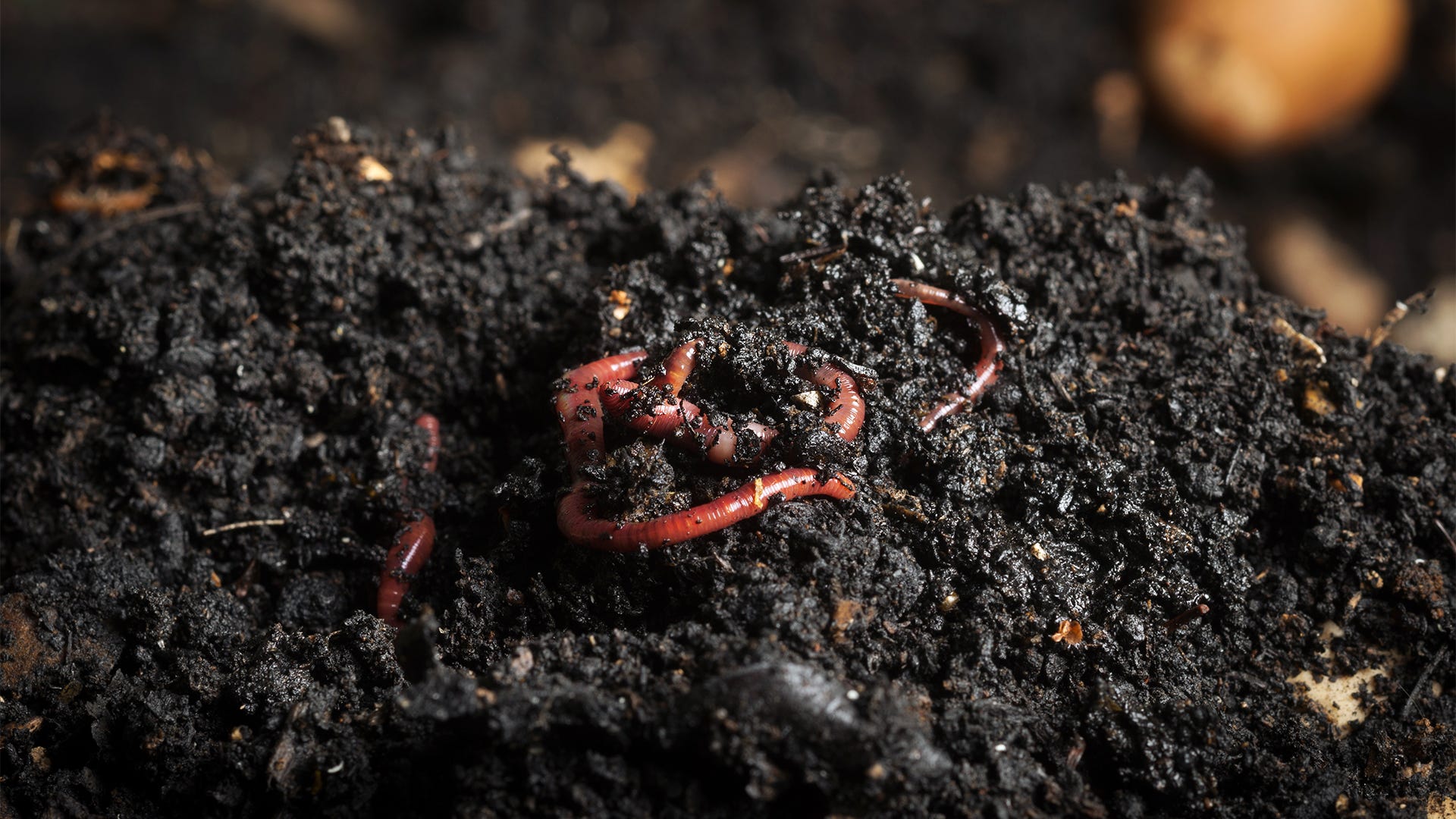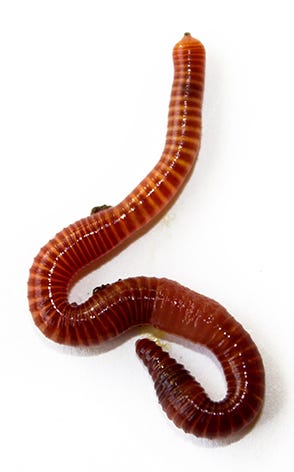Composting red worms: Tips for care a worm bin
How Red Wigglers Can Boost Your Organic Waste Recycling
Red wigglers stand for a crucial component in enhancing natural waste recycling, effectively converting everyday cooking area scraps and garden particles into useful worm castings. This procedure not just mitigates the volume of waste sent to garbage dumps yet additionally enriches soil vitality, promoting much healthier plant development without the need for synthetic fertilizers. Comprehending the ins and outs of developing a vermicomposting system and the optimum take care of these worms can considerably enhance the advantages. The question stays: just how can one successfully incorporate this method into their routine to take full advantage of effect?

Advantages of Red Wigglers
Red wigglers, a kind of composting earthworm, offer numerous advantages that make them indispensable in organic waste recycling. Their capacity to take in a wide array of organic products makes them extremely effective decomposers. These worms can process cooking area scraps, garden waste, and also paper products, changing them into nutrient-rich spreadings. This process not just lowers the quantity of waste sent out to garbage dumps yet likewise improves soil health and wellness.
Additionally, red wigglers boost soil oygenation and drainage with their delving activities, advertising a much healthier root atmosphere for plants. Their spreadings are rich in useful microbes and crucial nutrients, fostering durable plant development and improving soil framework (red wigglers). In addition, making use of red wigglers in composting is an eco-friendly alternative to chemical plant foods, which can have harmful adverse effects.
Additionally, vermicomposting with red wigglers is a low-maintenance and effective technique of reusing natural waste, making it accessible for homes and neighborhoods alike. Their fast recreation price makes certain a steady supply for ongoing composting efforts, even more magnifying their advantages. Generally, red wigglers work as a crucial part in lasting waste monitoring and dirt improvement methods.
Establishing Up a Vermicomposting System
Producing an efficient vermicomposting system needs cautious planning and consideration of various factors that contribute to its success. The structure of an effective system starts with choosing a proper bin. Choices range from commercial containers to homemade choices, however it is vital that the container is well-ventilated and suitably sized to fit the number of red wigglers.
Next, the selection of bed linens product is important. Suitable bedding consists of shredded newspaper, cardboard, or coconut coir, which offers both a habitat and a source of carbon for the worms. The bedding needs to be dampened however not overly damp to stop anaerobic conditions.
Keeping the ideal atmosphere is essential. Red wigglers grow in temperature levels between 55 ° F and 77 ° F(13 ° C to 25 ° C )and call for a pH degree around neutral. Keeping track of moisture degrees is also critical, as way too much wetness can lead to smell issues, while too little can dry the worms.
Lastly, positioning the vermicomposting system in a shaded area protected from straight sunlight will certainly help preserve a stable setting. With these considerations in mind, one can properly set up a thriving vermicomposting system that improves natural waste recycling.
What to Feed Red Wigglers
Feeding red wigglers the ideal materials is essential to maintaining a healthy vermicomposting system. These worms grow on a diverse diet regimen mainly made up of raw material, that includes vegetables and fruit scraps, coffee premises, smashed eggshells, and shredded paper. It is necessary to stay clear of feeding them meat, dairy products, oily foods, or any processed things, as these can create smells, attract insects, and bring about an unhealthy environment.
A balanced diet for red wigglers advertises ideal food digestion and nutrient production. Go for a mix of green materials, high in nitrogen, such as vegetable peels and yard clippings, and brownish products, rich in carbon, like dried leaves and cardboard. This equilibrium ensures a sustainable food source while keeping dampness levels in the worm bin.
In addition, it is advisable to chop or shred larger scraps to accelerate disintegration and make the food extra available to the worms. Consistently keeping track of the usage rate will certainly assist establish the ideal amount to feed, preventing overfeeding and maintaining a flourishing community. By supplying an appropriate diet plan, you not just support the health and wellness of red wigglers however likewise improve the effectiveness of your vermicomposting efforts.
Maintaining Your Worm Container
To make sure the health and productivity of your vermicomposting system, keeping your worm bin is important. Routine surveillance of dampness degrees is important; the bedding needs to perspire but not soaked. If it becomes also wet, excess moisture can bring about anaerobic conditions, damaging your worms. On the other hand, if it is too completely dry, worms may come to be inactive or pass away.
Extreme temperature levels can stress or eliminate your worms. To attain this, put your container in a climate-controlled environment away from straight sunshine or heat sources.
Gently turning the bedding with a garden fork every few weeks will assist freshen the product and prevent compaction - red wigglers. If this occurs, decrease feeding and add even more carbon-rich products like shredded paper or cardboard.
(Western North Carolina Bait)
Utilizing Worm Castings in Horticulture

Worm castings, often referred to as "black gold" by garden enthusiasts, are a very nourishing natural plant food that can substantially boost dirt wellness and plant development. These spreadings are created by red wigglers as they digest natural issue, leading to a rich, dark, crumbly material bristling with valuable microbes.
Incorporating worm spreadings into yard dirt enhances its structure, oygenation, and wetness retention, creating an optimal setting for origin development. The high nutrient web content of worm castings, consisting of nitrogen, phosphorus, and potassium, adds to energetic plant development and boosted yields. Additionally, worm spreadings include important trace element and enzymes that advertise the overall wellness of plants, enabling them to better endure parasites and illness.
Worm castings can be used directly to the dirt or mixed right into potting mixes for container horticulture. A thin layer spread over yard beds or contributed to compost heaps can likewise enhance the microbial task and nutrient profile of the garden compost. As a sustainable and green fertilizer important source alternative, worm castings sustain natural gardening techniques while decreasing dependence on synthetic plant foods, thereby promoting a healthier environment.
Verdict
To conclude, the assimilation of red wigglers into organic waste reusing practices provides a sensible service for boosting soil health and wellness and advertising sustainable gardening methods. By effectively breaking down cooking area scraps and yard waste, red wigglers add to nutrient-rich worm castings that enhance dirt aeration and wetness retention. This eco-friendly strategy not only minimizes landfill contributions but likewise lessens the dependence on chemical fertilizers, eventually cultivating much healthier ecosystems and responsible waste monitoring techniques.